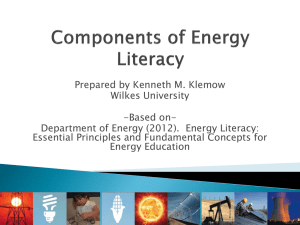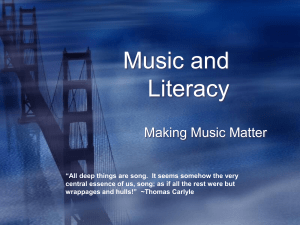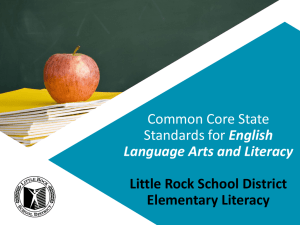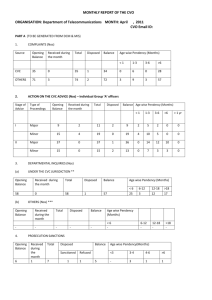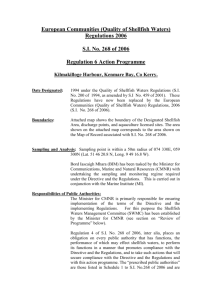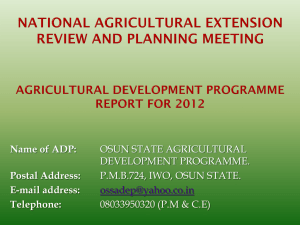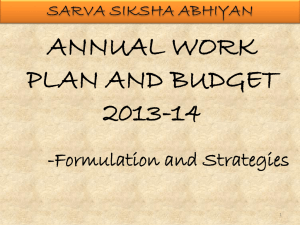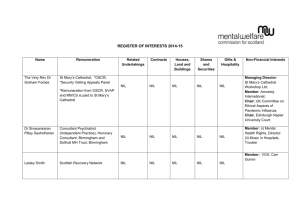Authentic Literacy Strategies for Content-Area Teachers
advertisement
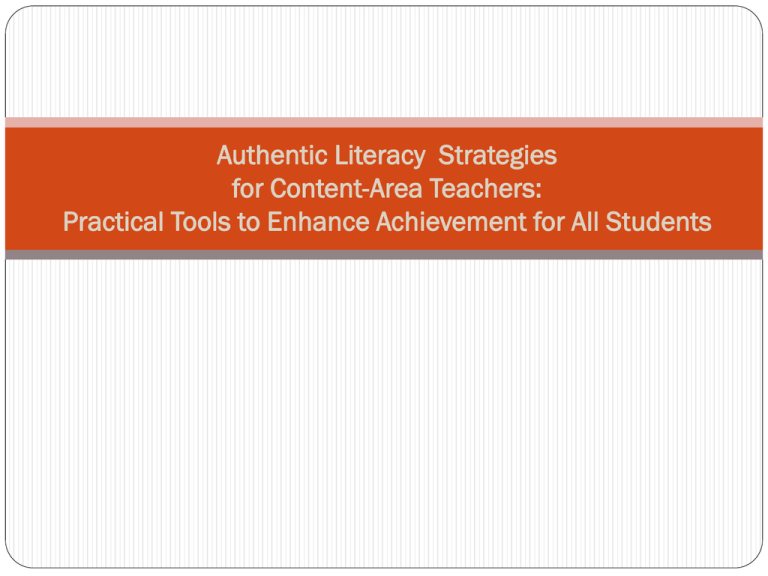
Authentic Literacy Strategies for Content-Area Teachers: Practical Tools to Enhance Achievement for All Students Why is this important? •Global information economy requires advanced literacy skills. •One of seven U.S. adults is functionally illiterate. •Reading skills = key achievement predictor in all subjects, especially math and science. •When students read effectively, teachers can teach more in-depth content in less time. •Content learning and reading/writing to learn are deeply intertwined. Issues to consider . . . “Teachers waste an extraordinary amount of literacy-instruction time on activities that have marginal effect on students’ literacy development” (Schmoker). •The Montillation of Traxoline •“Red Square Question” Red Square Question “. . . It wasn’t like it was spread all over the place, like you had to read it. It was just like, if the ‘red square question’ was here, you knew it was somewhere around that area, right there. And you could just look for the answer and copy it down and you got full credit for it. So you didn’t have to read. It was something that you could like slide by without them knowing. I don’t know if they cared or not, but that’s the way everybody did it. You see the “red square question” and you sort of calculate where it’s around, you find the answer, and you write it down, and that’s it.” ~Rosa, 9th grader, describing her experiences reading history (Leem 17). What works? •Develop students’ abilities to work to make meaning from what they read. •Teaching content knowledge and reading strategies in tandem through a process of explicit instruction, guided practice, independent practice (NIL 55-56). •Daily literacy practice integrated with content instruction and technology in all classrooms. What successful strategies/procedures are you currently using that marry content and literacy ? Summarize your department’s ideas in the Current Practices discussion (click that subject) on the wikispace discussion tab. In the subject line, add the department name. In the reply section, summarize ideas in response to the above question. Be sure to click Post to add your discussion comment. Practical Strategy #1: Close/Strategic Reading •Reading with discipline-specific purposes with selected short passages; promotes fluency and deep understanding •Modeling “think alouds,” meaning making, expert readers •Encourages readers to ask questions •Builds vocabulary skills with pre-teaching new words •Modeling and practice easily integrated with technology; MS Word (highlight, thesaurus, comment, symbols) •Repeated practice internalizes skills. “Practice is so powerful it changes the brain.” •Reciprocal teaching model, NIL 57-58; Think Alouds, NIL 49 How can you use the close reading strategies to develop content? Summarize your department’s ideas in the Close Reading discussion (click that subject) on the wikispace discussion tab. In the subject line, add the department name. In the reply section, summarize ideas in response to the above question. Be sure to click Post to add your discussion comment. Practical Strategy: Active Reading •Students work to make meaning of discipline- focused texts to build knowledge over time. •Shift responsibility for thinking and making sense of texts to students themselves through guided supports. Practical Strategy #2: Active Reading with Graphic Organizers •Helps students organize concepts during and after reading •Contributes to development of critical analysis and reading skills •Integrates with range of technology: MS Word: Insert→Smart Art (note relationship categories) Inspiration (on all CFF laptops) Webspiration (collaborative resource) •NIL 24, 50-53 Practical Strategy #3: Question-Answer Relationships (QAR ) •Types of Questions •Models/guides students to generate questions •Supports “strategies that work” •Used before/during/after reading •NIL 20-21 Practical Strategy #4: Student-Generated Charts •Reflection Chart •Inference Chart •Inquiry Chart, NIL 54 •MS Word tables, charts • SmartNotebook tables Practical Strategy #5: Bookmarks/Reaction Guides •Anticipation Guide, NIL 54 (for key ideas for inquiry during reading and re-visit after reading) •Similar strategy incorporated in before/during/after interactive bookmarks Practical Strategy #6: Active Reading Post-Its To “annotate” texts: Pose questions Mark main ideas Make predictions Mark reactions Practical Strategy #7:Note taking Generalizations and Recommendations Verbatim note taking=least effective way to take notes. Give teacher-prepared notes to students to annotate. Notes should be considered a work in progress. Notes should be used as study guides for tests. The more authentic note taking, the better. Have students practice a variety of note-taking formats and combination notes: Inspiration Templates PowerPoint (notes on bottom, view notes page) Practical Strategy #8:Vocabulary •Pre-teaching in context (see close reading) •Window pane •Word splash: all words in one paragraph rather than unrelated sentences •Word map, NIL 59 Practical Strategy #9: Writing to Learn What not to do: “Not worksheets, not vapid questions at the end of the selection, not canned formulas” (Schmoker). What works: Writing to learn Writing to disclose learning Writing to express opinions Writing to connect Writing to Learn •Diverse demands of content areas: lab report example •Paragraph: basic unit to develop “chain of logic” •Managing this challenge of daily writing: Collins Writing Program.docx; Collins online:The Collins Writing Program; Other examples Quickwrites, exit slips MS Word; Office Live; Wiki discussion •Analytical and persuasive writing for advancing critical reasoning: estimating (similarities/differences), synthesis paper •Purposeful writing: real world relevance (project based, math, simulations, iEARN ) Authentic Literacy Across-the-Curriculum Benefits Repetition of strategy or skills in “different contexts and with different texts . . . contributes to the improvement of adolescent literacy skills” (NIL 39). “Thoughtful reading, writing, and discussion in redundant abundance, promote faster, more enduring achievement gains on state assessments than quick-fix approaches” (Schmoker). How can you use active reading and writing to learn strategies to develop content? Summarize your department’s ideas in the Reading and Writing to Learn discussion (click that subject) on the wikispace discussion tab. In the subject line, note the department name. In the reply section, summarize ideas in response to the above question. Be sure to click Post to add the discussion comment. Works Consulted Leem, C.D.; Spratley, A. Reading in the Disciplines:The Challenges of Adolescent Literacy. New York: Carnegie Corporation, 2009. National Institute for Literacy. What Content-Area Teachers Should Know about Adolescent Literacy. Washington: NICHD, US Department of Education, 2007. Pitler, Howard, et al. Using Technology with Classroom Instruction that Works. Denver: Mid-continent Research for Education and Learning (McRel), 2007. Schmoker, Mike. “Radically Redefining Literacy Instruction: An Immense Opportunity.” Phi Delta Kappan 88.7 (2007): 488-93. Time To Act: An Agenda for Advancing Adolescent Literacy for College and Career Success. New York: Carnegie Corporation, 2009. VanDeWeghe, Rick. “ Research Matters: Authentic Literacy and Student Achievement.” English Journal 97:6 (2008): 105-108.



